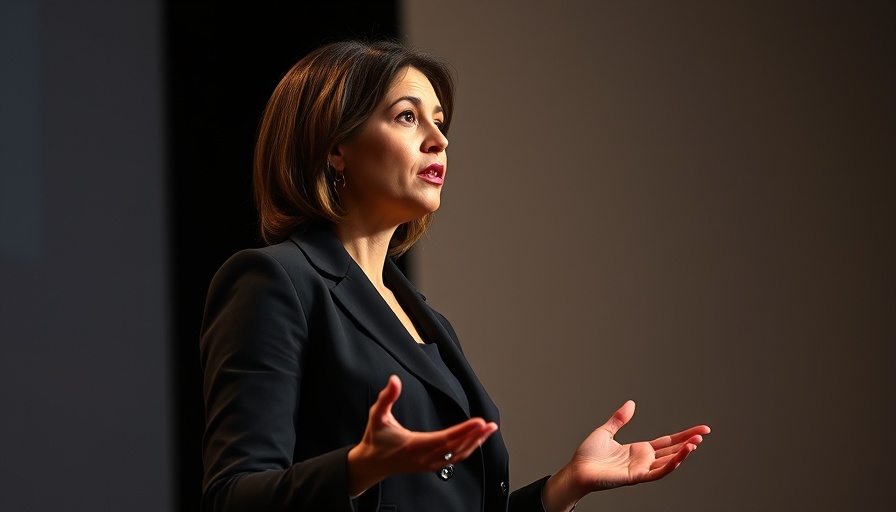
Understanding Leadership Through Crisis
When Rochelle Walensky assumed the role of the 19th director of the Centers for Disease Control and Prevention (CDC) during an unprecedented global pandemic, she stepped into a world where the stakes were frighteningly high. Over 4,000 people were dying daily due to COVID-19, and the weight of this reality was not lost on her. As Walensky eloquently explains in her TEDx talk, her guiding principle throughout her career has always been simple yet profound: "people matter". This sentiment resonates deeply in today’s climate, where compassion in leadership is as crucial as technical expertise.
In 'What directing the CDC taught me about compassion', Rochelle Walensky discusses the vital role of empathy during crises, prompting us to delve into how compassionate leadership can shape our future.
The Transformative Power of Empathy in Healthcare
Walensky’s experiences underscore a critical lesson: empathy is the bedrock of effective healthcare. As she recounts her journey from a terrified medical resident to the director of the CDC, she emphasizes how moments of personal connection—like holding a patient's hand—define a healthcare provider's role. In a world increasingly reliant on data and technology, Walensky reminds us that it is the human element that creates lasting impacts, especially when addressing global health crises.
Unforeseen Challenges of Public Service
Taking on a pivotal role during COVID-19 came with many unforeseen challenges, including personal threats and the overwhelming pressure of public scrutiny. In her talk, Walensky shares a personal anecdote about receiving a mysterious package at her home, which turned out to be a token of gratitude from a passenger she had previously assisted. This incident illustrates how genuine connections, even amidst chaos, can serve as reminders of purpose and resilience.
Innovation Driven by Necessity
As Walensky navigated the complexities of her role, she also confronted systemic issues, including stigma surrounding diseases like HIV and barriers to essential healthcare. By advocating for expanded HIV testing and challenging outdated policies, she exemplified how innovation in public health can emerge from necessity. This approach is increasingly relevant to today's challenges in various fields, illustrating how leaders can drive impactful change by prioritizing connection and understanding.
The Role of Compassionate Leadership in Crisis Management
The COVID-19 pandemic highlighted the need for compassionate leadership across all sectors. Walensky’s commitment to acknowledging unrecognized heroes within her team mirrors a growing trend toward nurturing workplace culture—especially during trying times. By valuing each individual's contribution, leaders can cultivate a sense of belonging that motivates teams to persevere during crises.
Lessons from Adversity: Building a Future of Inclusion
Walensky's narrative serves as an inspiration for cultivating a future rooted in social justice and inclusion. From advocating for the rights of marginalized groups to combating misinformation, her tenure at the CDC underscores the importance of viewing public health through a lens of equity. Recognizing diverse perspectives will be crucial in addressing future global issues.
Conclusion: A Call for Action in Uncertain Times
Walensky’s experiences and the lessons she imparts through her TEDx talk remind us that in leadership, it is not only about making decisions but also about fostering connections that matter. In a rapidly changing world, where technology and innovation reshape possibilities, we must prioritize empathy and understanding in every interaction. As we face global challenges, let’s adopt Walensky's guiding principle that, ultimately, how we treat one another defines us. Now is the time to act—foster kindness, advocate for inclusion, and prioritize the well-being of all individuals.
 Add Row
Add Row  Add
Add 




Write A Comment